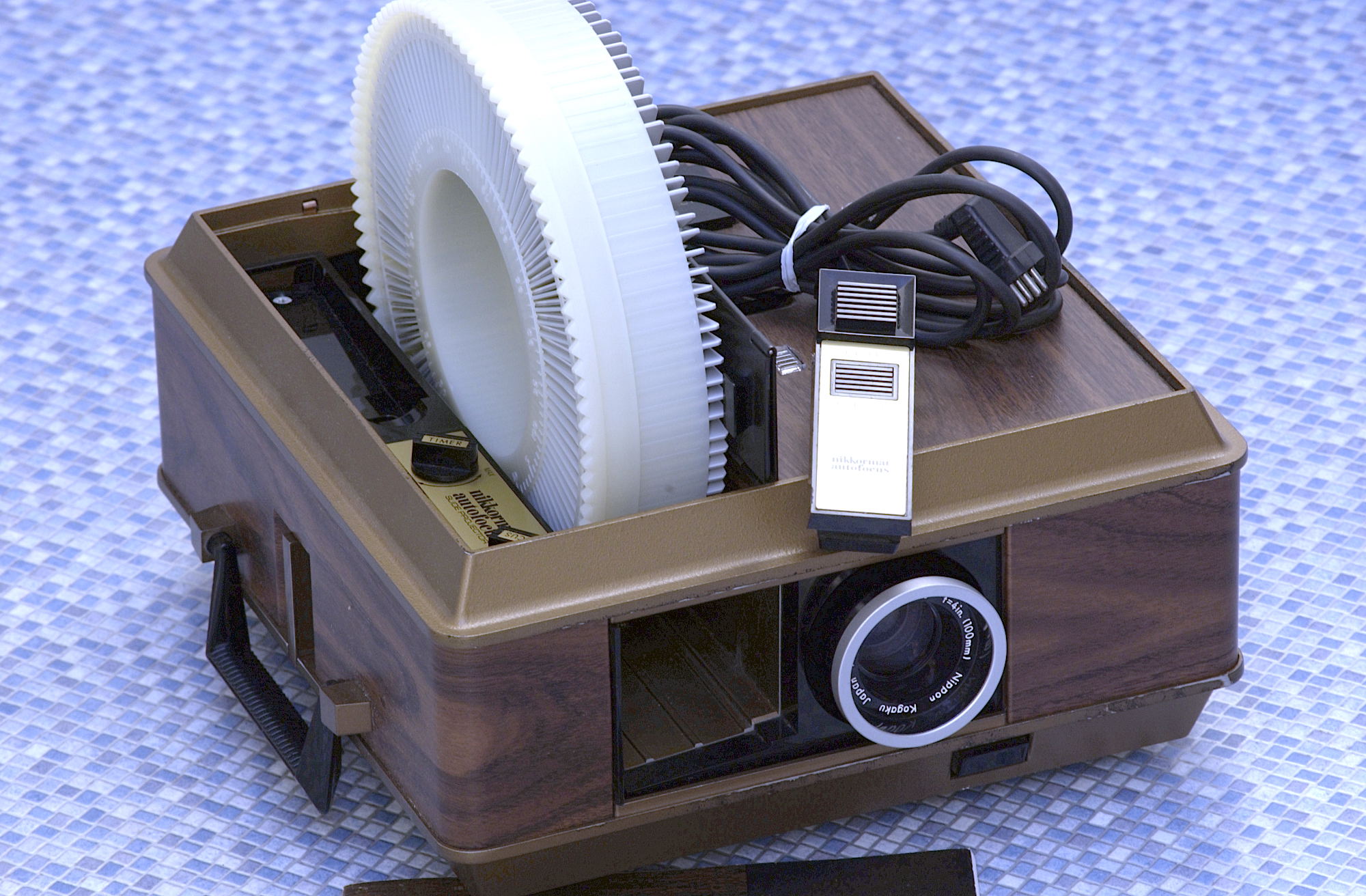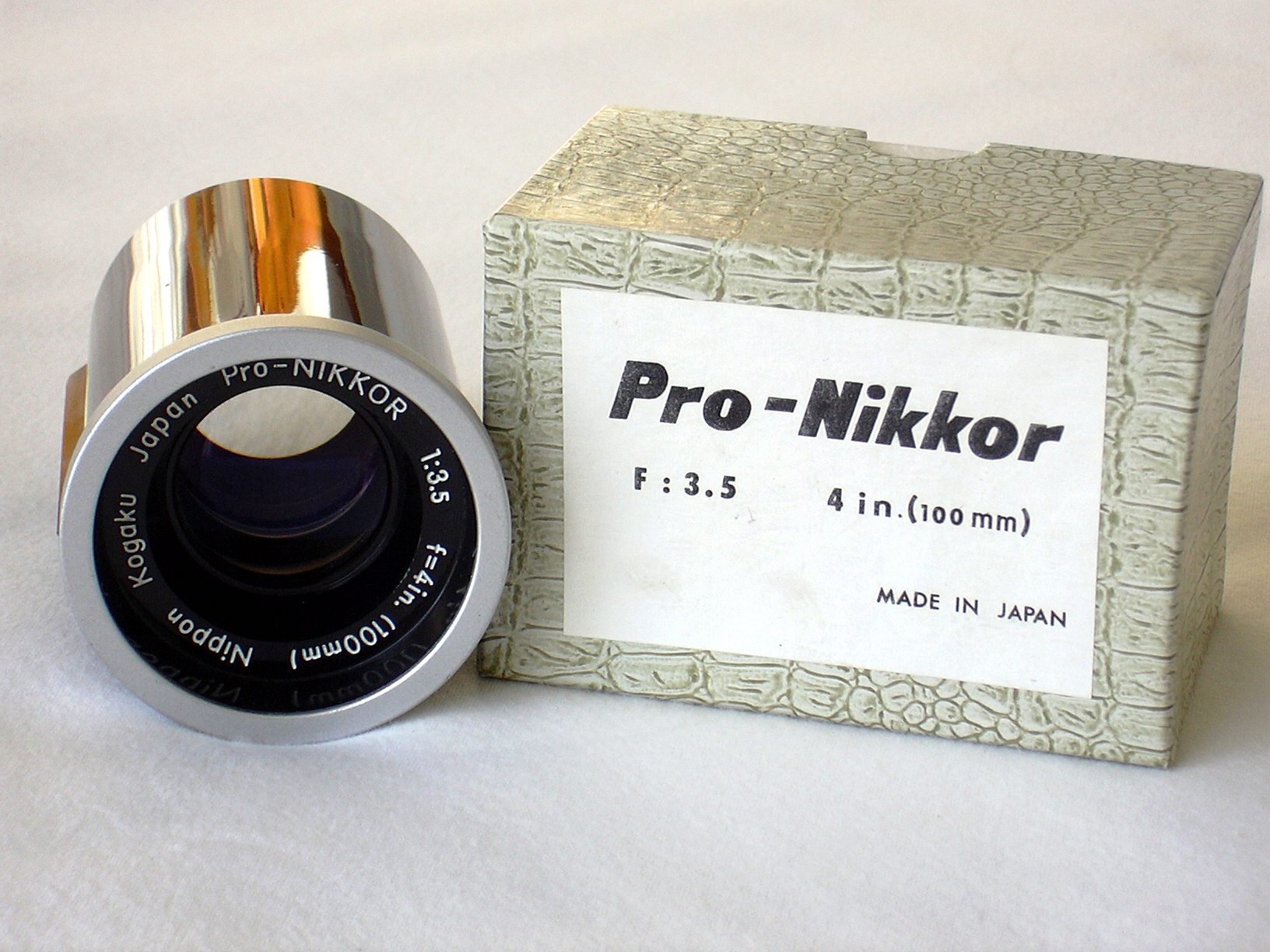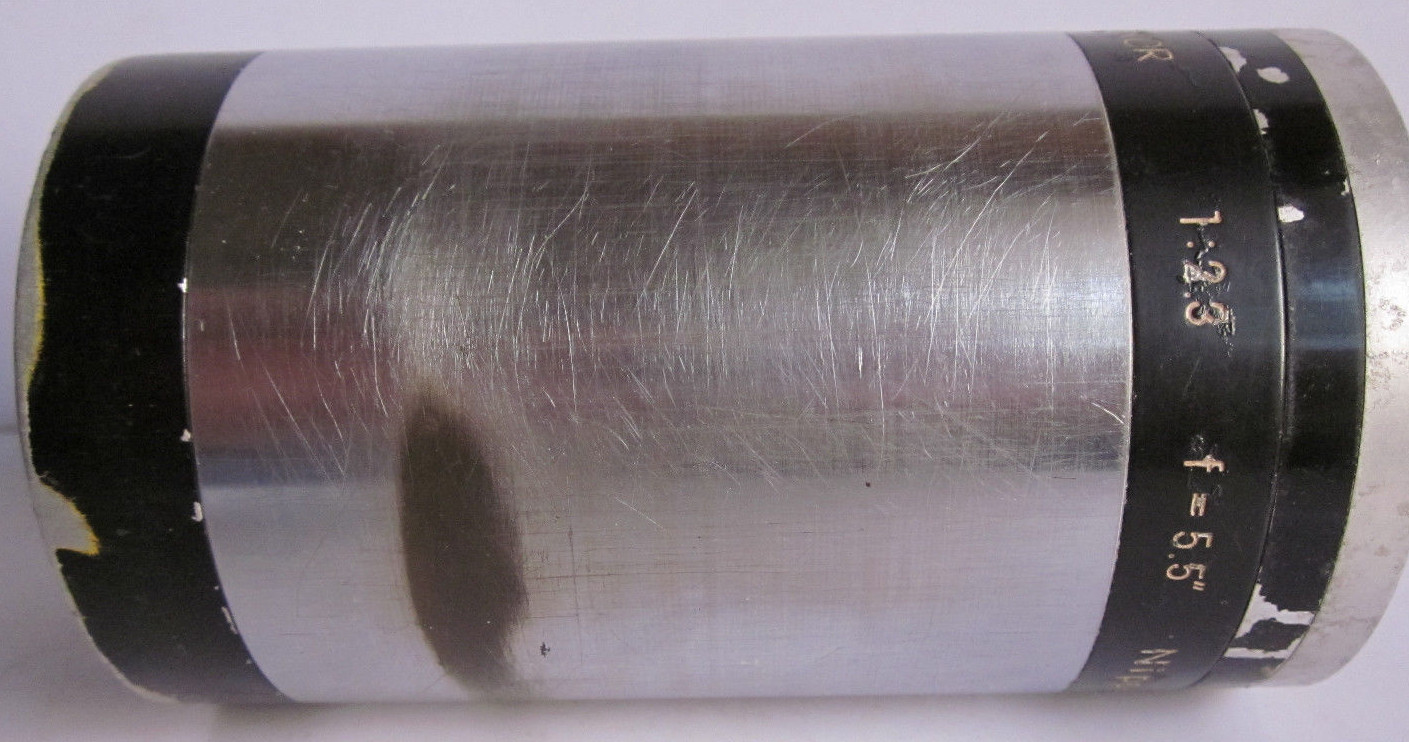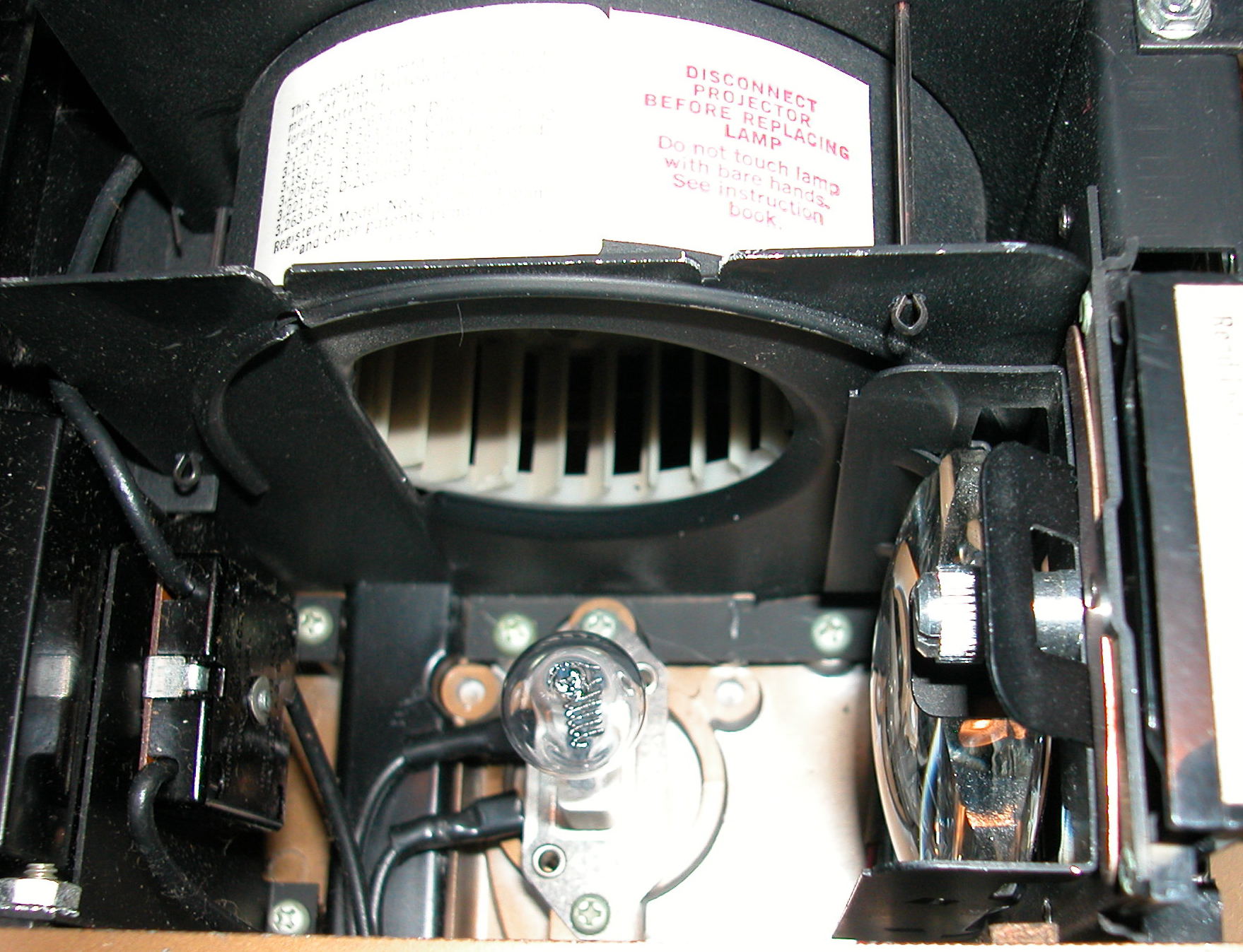Nikon - Nikkormat slide projector(how to replace a lamp scroll down, please)Nikon products have been imported in the United States of America by a man who had a good nose for marketing and public relations. This man, the late Joseph Ehrenreich, owner and president of Ehrenreich Photo-Optical Industries (EPOI) in New York, managed to get the exclusive import of Nikon products. It is not an overstatement to say that Ehrenreich made Nikon a success in the USA. Many times he traveled to Tokyo to convince Nikon managers to produce a certain camera, lens or accessory. Unfortunately not always with success.
Nikkormat slide projector GC-2 with remote control and Rotary slide trayThe mid 1960´s amateur photography was booming; Nikon introduced the successful Nikkormat series, enabling amateur photographers to use the excellent Nikkor lenses. Ehrenreich stated that if you take a picture with a 100% quality lens, you should be able to present that picture or slide with a lens of the same quality. Nikon, however, wasn´t willing or able to produce a slide projector, so Ehrenreich contracted Sawyer´s Inc. in Portland (Oregon, USA), known for its View-Master system. Sawyer´s made a slide projector, based on an existing model, but Ehrenreich managed to get the permission to use the brand ´Nikkormat´ and ´Nikomat´ while Nikon Corporation even produced a special lens for it: the Pro-Nikkor 3.5/4 inch (100mm.).
Pro-Nikkor 3.5/100mm projection lensThe projector, priced at $ 150.-, has two models: the GC-1 (introduced in 1965) without - and the GC-2 (introduced in 1968) with auto focus .....and two names: projectors with the name ´Nikkormat´ are rather easy to find, but with the name ´Nikomat´, which was used in some markets, are rare. Both models - however - are technically identical: forward and backward transport, automatic timer (max. 30 sec. interval), adjustable condenser for various slide formats, remote control, tape recorder connector and capable to use 5 different slide stacks (TDC-type) and trays (Rototray, EasyEdit, etc.). A minor feature for European users is the impossibility to use the Leitz-system trays, used by many other manufacturers and the 110 Volts/500 Watt lamp. The projector was destined - however - for the American market, and, thus, wasn´t sold elsewhere. If used in Europe (or anywhere else with a 220 Volt net) a voltage converter of at least 750 Watts should be used.
Clockwise: single slide preview window, single slide entry, power indicator, focus and timer wheel, remote control with forward/reverse & slide change buttons.If one compares the performance of this projector (read: the condenser and the lens), this projector is in no way inferior to the Leitz Pradovit + Super Colorplan or Zeiss-Ikon Perkeo + P-Planar. In the folders and manual, that came with the projector, was stated that more PRO-Nikkor lenses would become available. However, those promised lenses (of focal lengths of 3, 5 and 6 inches) have become extremely rare. Below some images of possible Nikkormat projection lenses. After a production period of less than 10 years the curtain dropped for the projectors.
However, recently an extremely rare Pro-Nikkor 2.3/5.5 inch (140 mm) and a
Pro-Nikkor.C 2.2/4 inch (100 mm) has been found. On an internet forum a Pro-Nikkor.C 1.6/2 inch (50 mm) is mentioned. The Nikomat/Nikkormat slide projector model was used for other brands as well. Below you´ll see a ´brother´ of the Nikkormat projector: the almost identical Minolta Autopack AFT slide projector; only the projection lens - P-Rokkor 2.8/4 inch = 100mm. - is a different one. All parts, even the remote control, are interchangeable. two identical projectors with their own lens and ´tartan´. As the Nikkormat/Nikomat slide projector wasn't cheap in comparison to other brands, not many were sold. Production stopped in 1971. Nowadays a working projector is hard to find. As stated before the best 'market' to find one is in the USA, as in other parts of the world this projector was not marketed.
How to replace a projector lamp?Before opening the projector be sure that the projector is disconnected from power and the projector has cooled sufficiently Do not remove the cover while the lamp is turned on!! To open the top cover lift up the cover of the slide compartment and fold it at the center hinge. Insert a slim screwdriver into the small horizontal slot centered on the upper side of slide tray tunnel just below the cover hinge (see below).
After you've removed the top cover lift out the metal chimney surrounding the lamp. With your fingers covered with a tissue, handkerchief of soft cloth, grasp the old lamp and pull it straight up without twisting it. Never touch quartz iodine projection lamps with bare hands. Before inserting a new lamp first clean the reflector and collector lens in the chimney and the cooling fan (see pics below). To insert a new 500-watt quartz iodine lamp align pins in the socket and press the lamp down, without twisting, until the lamp is seated. Replace the chimney in the right way so it fits into the locating wells around the lamp base and into the slots on top of the fan wall/holder. After everything fits well close the top cover.
When you've touched the lamp, your finger prints will burn the lamp wire or damage the lamp glass!!
|







